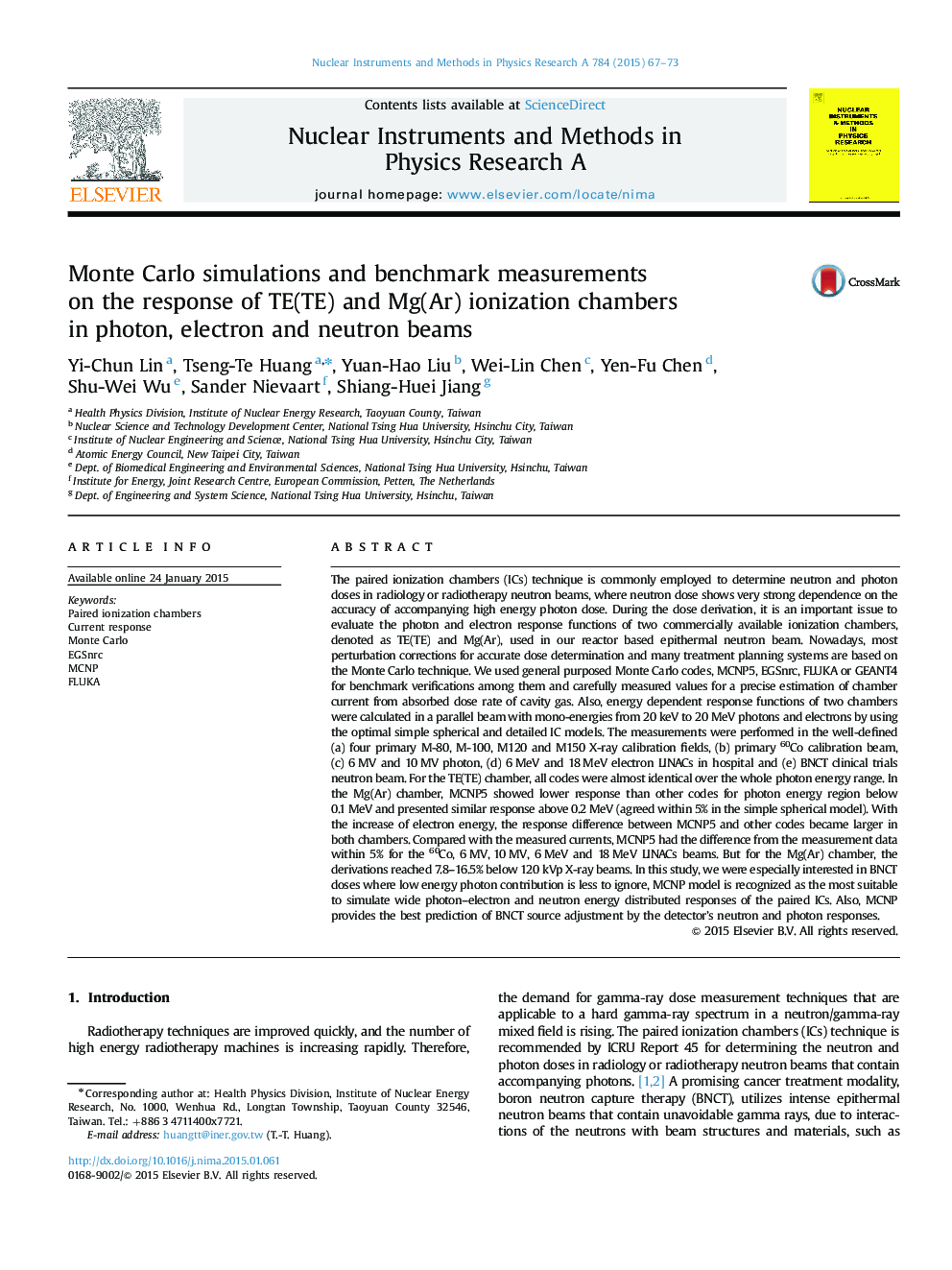| کد مقاله | کد نشریه | سال انتشار | مقاله انگلیسی | نسخه تمام متن |
|---|---|---|---|---|
| 1822430 | 1526342 | 2015 | 7 صفحه PDF | دانلود رایگان |

• We established optimal T2 & M2 paired ICs model in benchmark x, γ, e & n fields.
• We used MCNP, EGSnrc, FLUKA or GEANT4 for IC current simulations.
• In keV photon, MCNP underestimated M2 response, but accurately estimated T2.
• On detector response, we commented for source component adjustment.
• For BNCT, MCNP still provides the best prediction of n & photon responses.
The paired ionization chambers (ICs) technique is commonly employed to determine neutron and photon doses in radiology or radiotherapy neutron beams, where neutron dose shows very strong dependence on the accuracy of accompanying high energy photon dose. During the dose derivation, it is an important issue to evaluate the photon and electron response functions of two commercially available ionization chambers, denoted as TE(TE) and Mg(Ar), used in our reactor based epithermal neutron beam. Nowadays, most perturbation corrections for accurate dose determination and many treatment planning systems are based on the Monte Carlo technique. We used general purposed Monte Carlo codes, MCNP5, EGSnrc, FLUKA or GEANT4 for benchmark verifications among them and carefully measured values for a precise estimation of chamber current from absorbed dose rate of cavity gas. Also, energy dependent response functions of two chambers were calculated in a parallel beam with mono-energies from 20 keV to 20 MeV photons and electrons by using the optimal simple spherical and detailed IC models. The measurements were performed in the well-defined (a) four primary M-80, M-100, M120 and M150 X-ray calibration fields, (b) primary 60Co calibration beam, (c) 6 MV and 10 MV photon, (d) 6 MeV and 18 MeV electron LINACs in hospital and (e) BNCT clinical trials neutron beam. For the TE(TE) chamber, all codes were almost identical over the whole photon energy range. In the Mg(Ar) chamber, MCNP5 showed lower response than other codes for photon energy region below 0.1 MeV and presented similar response above 0.2 MeV (agreed within 5% in the simple spherical model). With the increase of electron energy, the response difference between MCNP5 and other codes became larger in both chambers. Compared with the measured currents, MCNP5 had the difference from the measurement data within 5% for the 60Co, 6 MV, 10 MV, 6 MeV and 18 MeV LINACs beams. But for the Mg(Ar) chamber, the derivations reached 7.8–16.5% below 120 kVp X-ray beams. In this study, we were especially interested in BNCT doses where low energy photon contribution is less to ignore, MCNP model is recognized as the most suitable to simulate wide photon–electron and neutron energy distributed responses of the paired ICs. Also, MCNP provides the best prediction of BNCT source adjustment by the detector’s neutron and photon responses.
Journal: Nuclear Instruments and Methods in Physics Research Section A: Accelerators, Spectrometers, Detectors and Associated Equipment - Volume 784, 1 June 2015, Pages 67–73